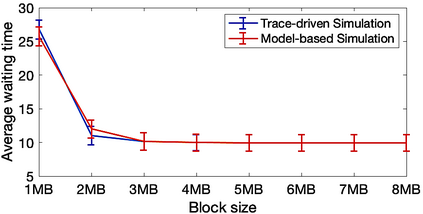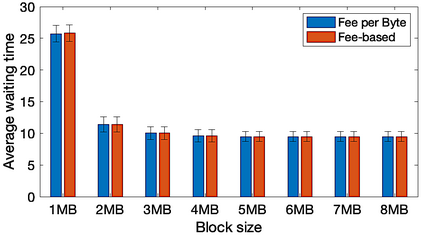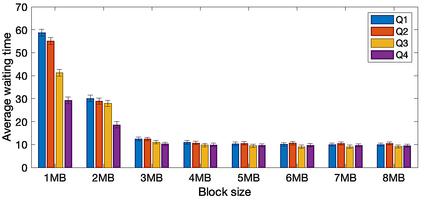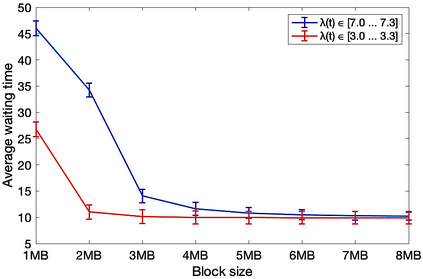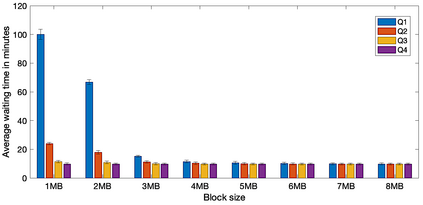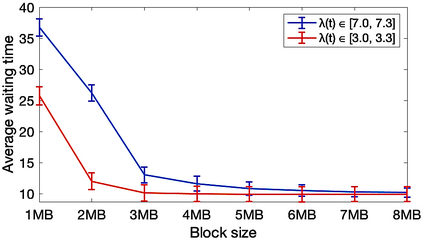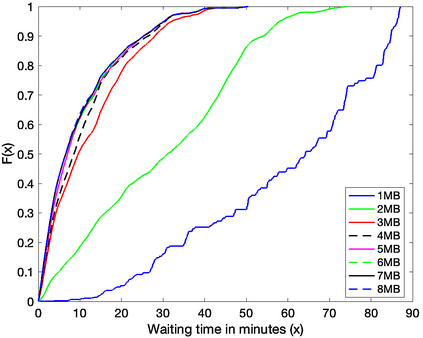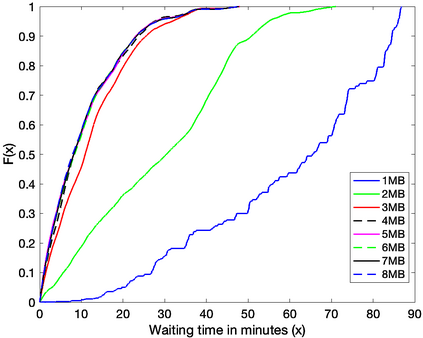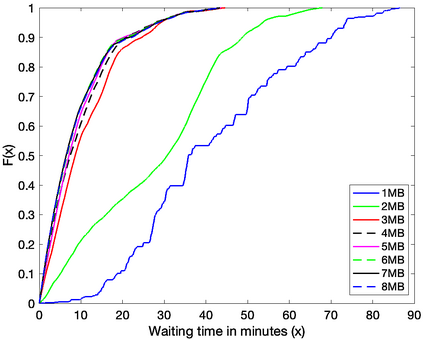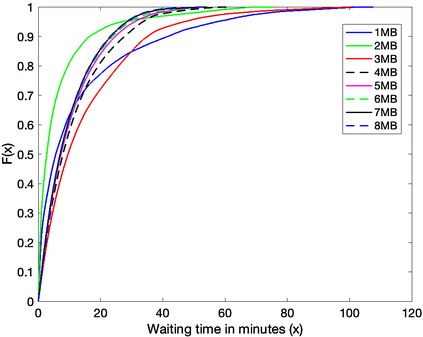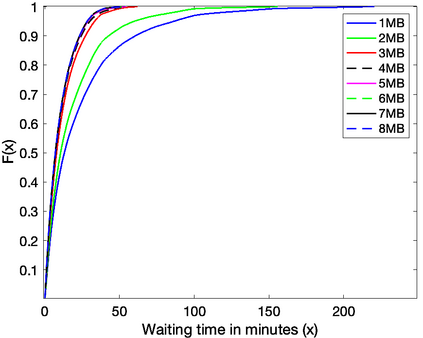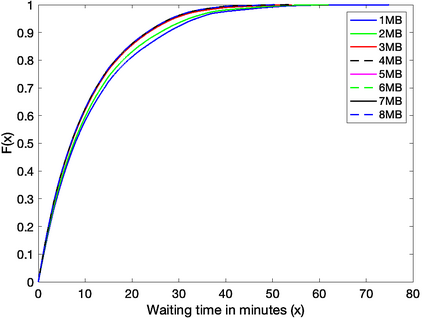Blockchain is a technology that provides a distributed ledger that stores previous records while maintaining consistency and security. Bitcoin is the first and largest decentralized electronic cryptographic system that uses blockchain technology. It faces a challenge in making all the nodes synchronize and have the same overall view with the cost of scalability and performance. In addition, with miners' financial interest playing a significant role in choosing transactions from the backlog, small fee or small fee per byte value transactions will exhibit more delays. To study the issues related to the system's performance, we developed an $M(t)/M^N/1$ model. The backlog's arrival follows an inhomogeneous Poison process to the system that has infinite buffer capacity, and the service time is distributed exponentially, which removes $N$ transactions at time. Besides validating the model with measurement data, we have used the model to study the reward distribution when miners take transaction selection strategies like fee per byte, fee-based, and FIFO. The analysis shows that smaller fee transactions exhibit higher waiting times, even with increasing the block size. Moreover, the miner transaction selection strategy impacts the final gain.
翻译:Bitcoin是第一个、也是最大的分散式电子加密系统,它使用链链技术。它面临着使所有节点同步并拥有与可缩放和性能成本相同的总体观点的挑战。此外,由于矿工的财务利益在从积压、小额收费或每字价值小收费的交易中选择交易方面起着重要作用,因此将出现更多的延误。为了研究与系统绩效有关的问题,我们开发了一个$M(t)/M ⁇ N/1美元的模式。积压的运抵遵循的是具有无限缓冲能力的系统不相容的毒性过程,服务时间被迅速分配,从而及时消除了1美元的交易。除了用计量数据验证模型外,我们还使用模型研究矿工采用交易选择战略时的奖励分配情况,例如每字节收费、收费和FIFO。分析显示,即使块大小越来越大,小额交易的等待时间也会增加。此外,矿工交易选择战略也会影响最终收益。


